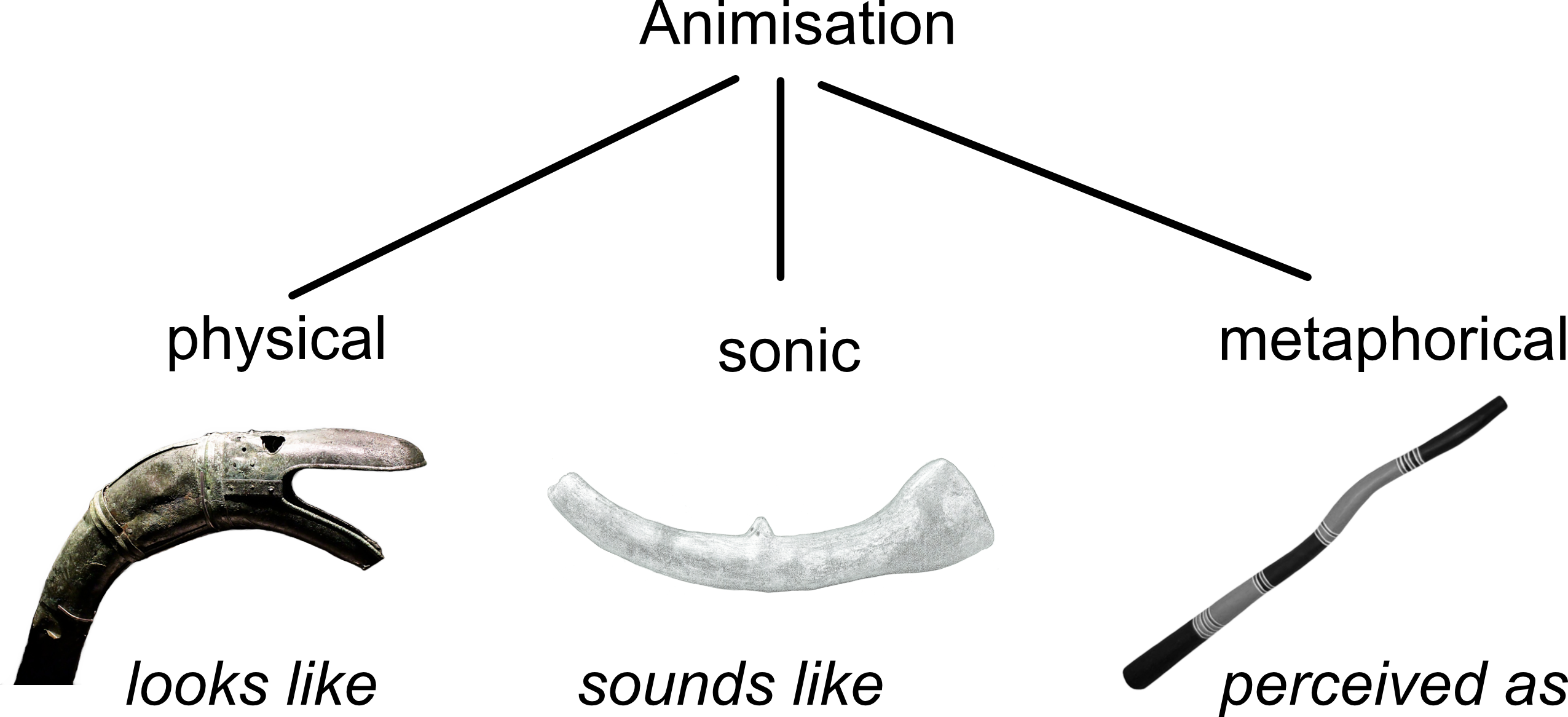The term animisation is used to describe the process where inanimate objects are granted animate powers. In terms of brass instruments, this happens when they look like something animate - a karnyx looks like a serpent; when a horn sounds like the bellow of a bull; when a myth exists which enables them to be perceived as something animate.
The image here shows one of the Tintignac karnyces which is fashioned in the shape of a serpent: a creature revered in ancient times for its ability to resurrect and be reborn in a new skin. It became a symbol of rebirth. The centre image is of a Neothithic (New Stone Age) pottery horn in the shape of a bull’s horn: blowing it could recreate the bellow of a bull, itself an avatar of the Son God who has to sacrificed to redeem the world. Stories of the First Australians tell how their didgeridoo becomes the Great Serpent of the Dreamtime in the Kunappipi ceremony. I doesn’t have to change, look like or sound like the Great Serpent. The myths endure that the transformation happens in the minds of everone involved.
The problems involved in interpreting ancient brass instruments arise when we have no writings from the past, no physical similarities in instruments and no way of interpreting what we now see. We must experiment, use ethnographic evidence to piece together a story and test out as many possibilities as we can come with.
In my book, I use the terms physical, sonic and metaphorical animisations: Section 2b.3
